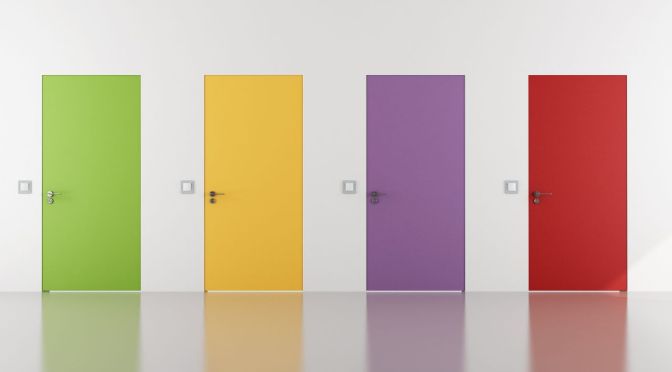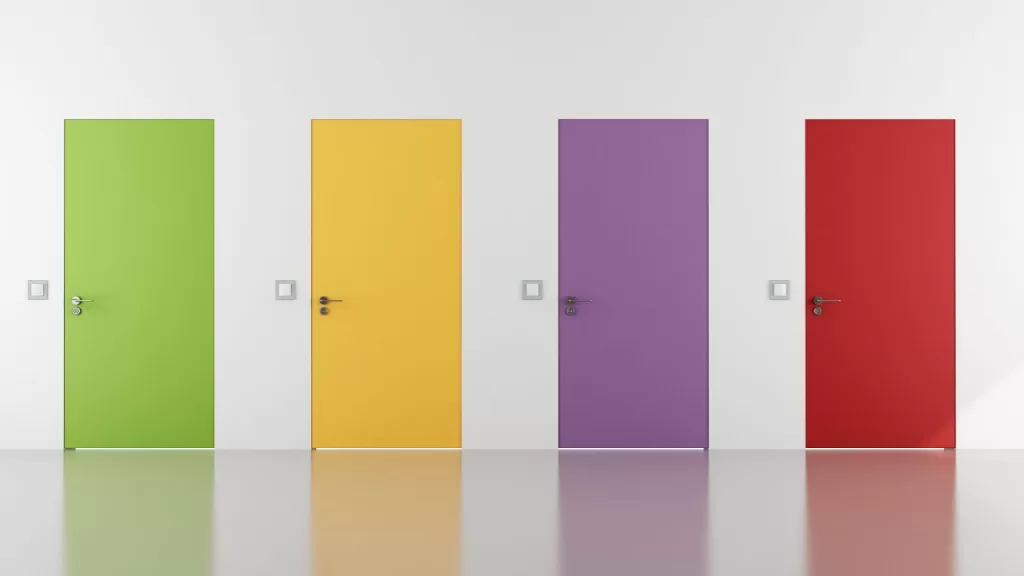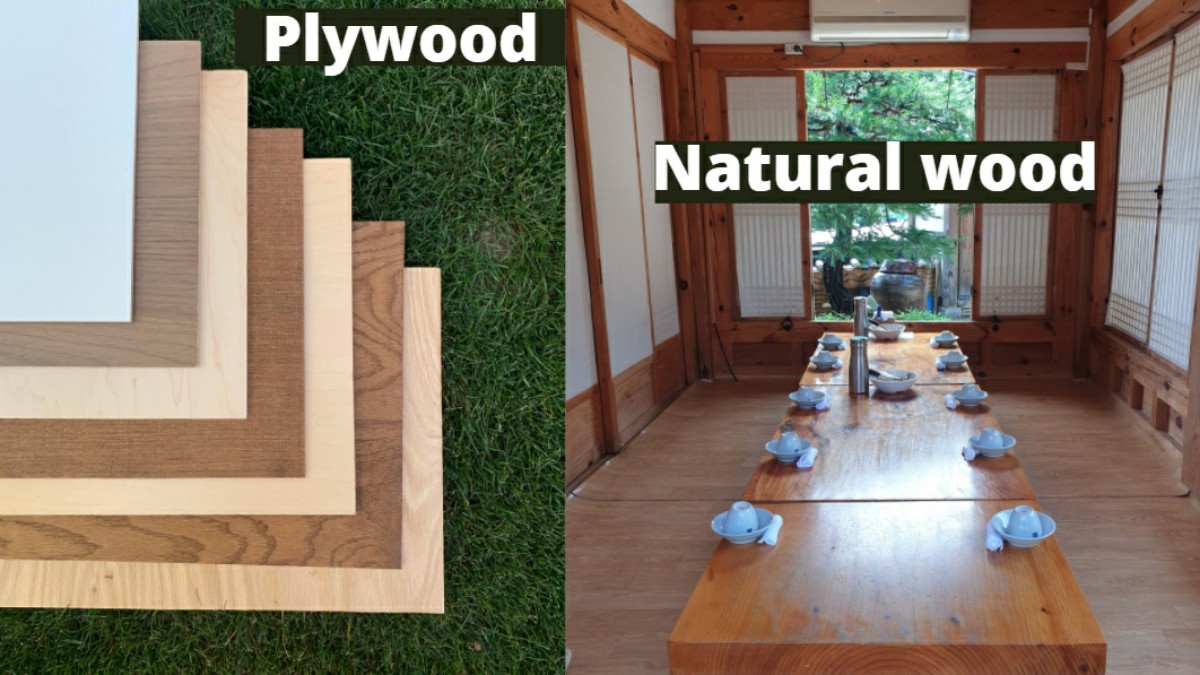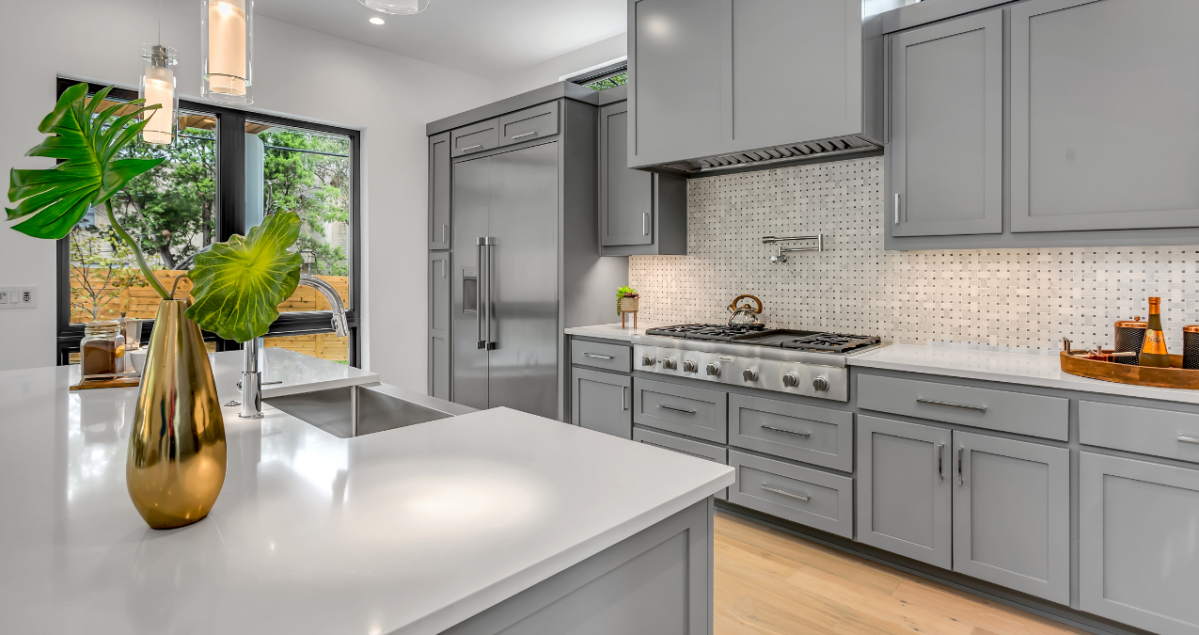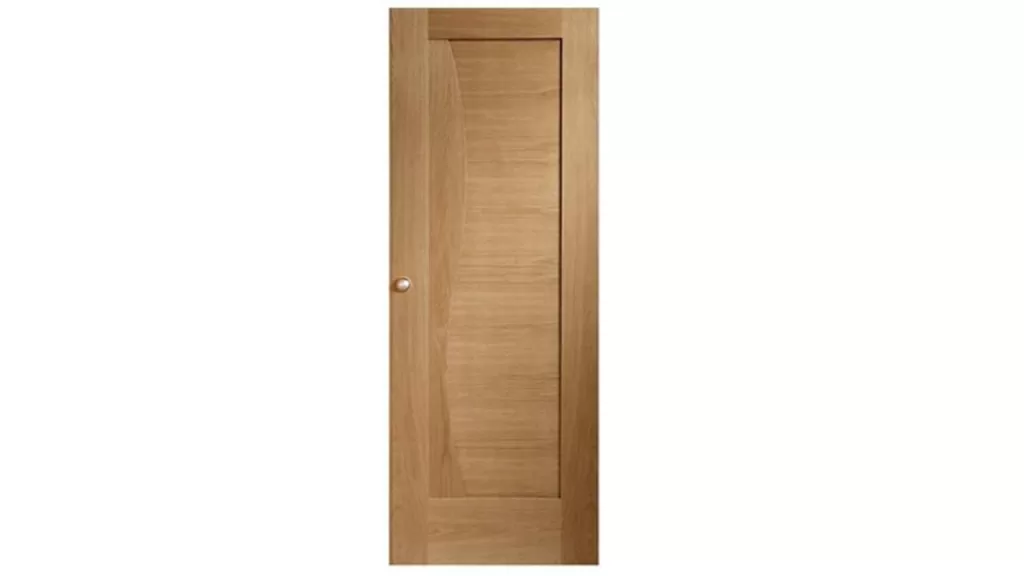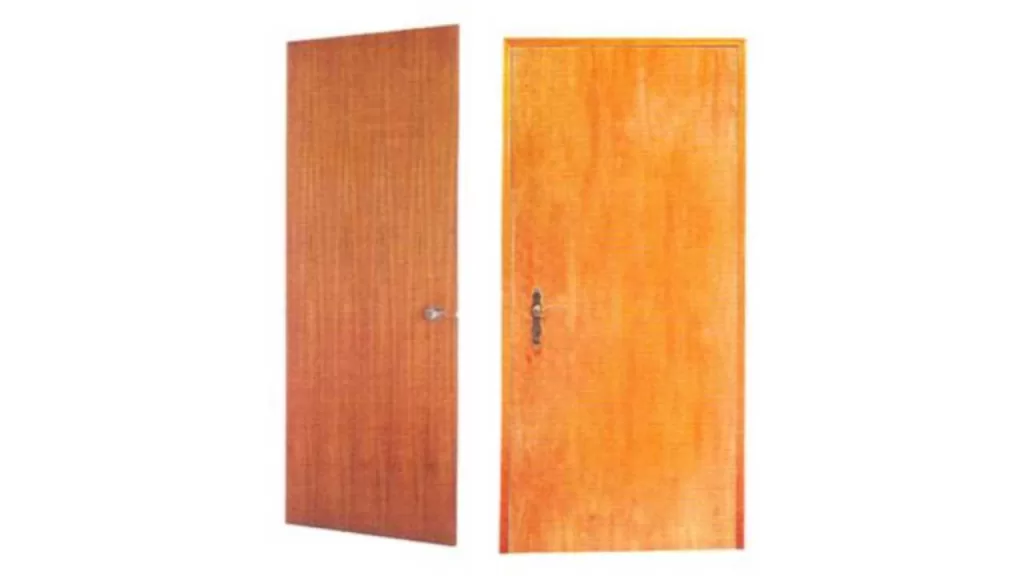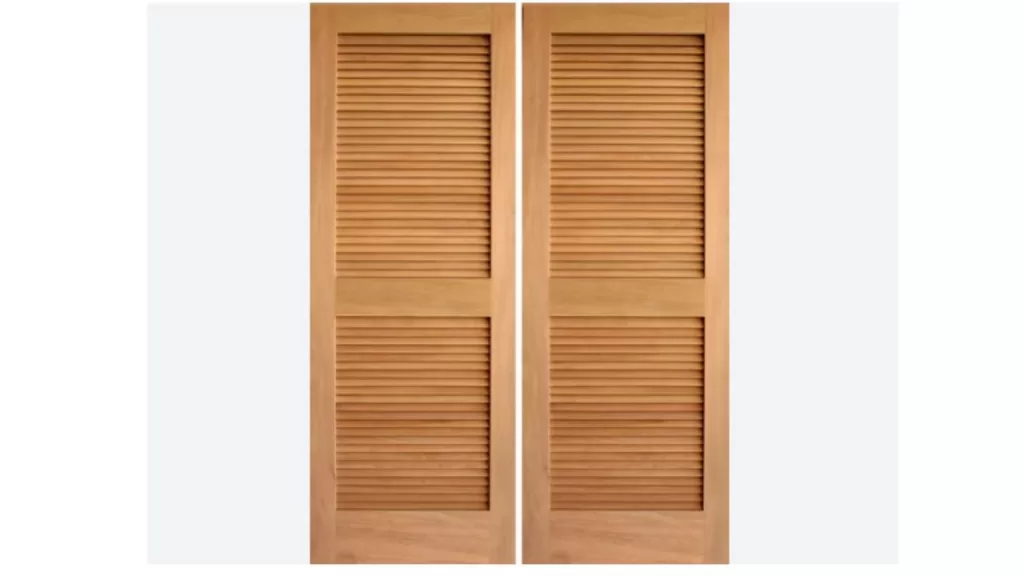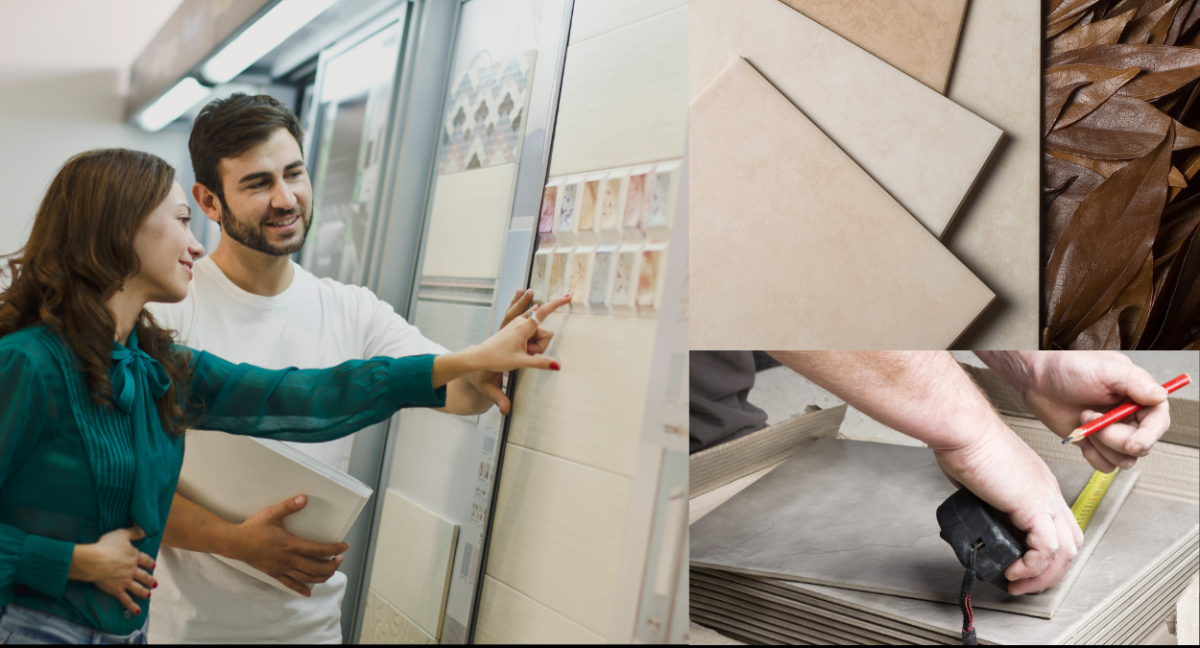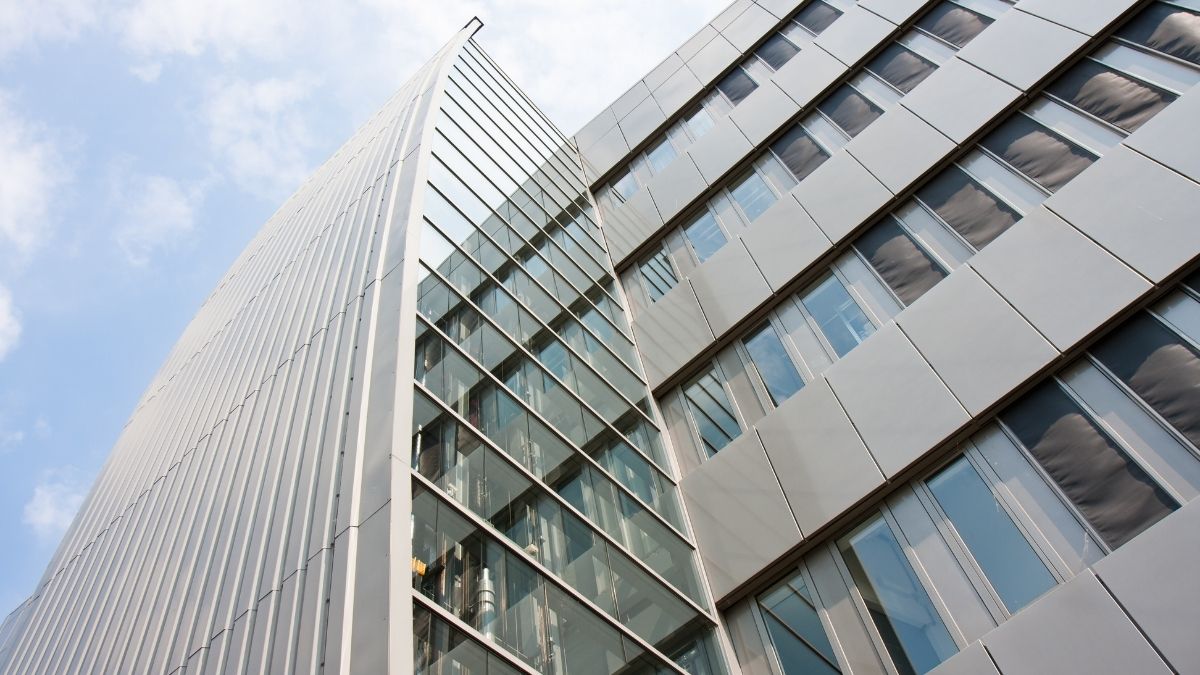Flushing door or flush doors are internal doors with a basic and elegant form, a level surface, and minimum decoration. The door panels are flush with the frame, hence the name “flush door.” Flush doors are popular in modern architectural design because of their clean, minimalist appearance and adaptability.
Doors obstruct or provide access to an entrance or exit to a building, room, or vehicle. Doors are essential for providing security and privacy. They can be made of various materials, including wood, metal, glass, or composites. They come in different forms. Doors are outfitted with a range of hardware such as locks, handles, hinges, and closers. This is to limit access and facilitate smooth operation. The type of door and hardware used depends on the intended purpose and location. For example, residential doors are typically more aesthetically pleasing, while commercial doors prioritize functionality and durability. Doors are essential in building construction and architecture because they can contribute to the overall aesthetics of a room.
This article is about Flush doors and types of flush doors used in building construction and architecture.
What is a flushing door or flush door?
A flush door is an interior door with a smooth, flat surface and no decoration or raised panels. The door panels are flush with the frame, giving the door its name. These doors have a wooden frame with plywood, MDF, or natural wood fixed on both sides. The top surface is finished with laminated sheets, veneers, paint, etc., resulting in a standardized and straightforward appearance. Flush doors are commonly constructed using wood in residential buildings due to their attractive and rich appearance. Poplar, mango, or pine wood can be used to construct the doors.
Related posts from vincivilworld
Different types of flushing doors
Flush doors are classified into different types. Classification is based on the materials used, the manufacturing method, the finish, and the location of the application.
The following are a few examples of common flush door designs:
- Solid Core Flush Doors
- Hollow Core Flush Doors
- Cellular core flush door
- Fire-rated flush door
- Louvered flush door
- Acoustic flush door
Let us discuss different types of flush doors in detail
Solid Core flushing/flush Doors
The manufacturers sandwich a solid core between two thin sheets of plywood or MDF. The core is made of particleboard, MDF, or solid wood. This construction provides a flush surface on both sides of the door. They then veneer the door with real wood or decorative laminate. These doors typically consist of robust and mineral-based timber and use a variety of materials. The materials they use include blockboard, laminated core, cross band, face wood veneer, and particle board.
This construction method improves the door’s durability and resistance to damage compared to a hollow core door. Solid-core flush doors find frequent use in both residential and commercial structures. This is because of their excellent sound insulation and privacy features.
Solid-core flush doors are popular due to their customization options and affordability compared to solid wood doors. Solid core flush doors come in various sizes and styles, including panel and slab options. They can also be purchased with a range of hardware options, including hinges, handles, and locks.
Cellular core flush door
The cellular core flush door comprises a hollow core made up of a honeycomb or grid-like structure. The core is then sandwiched between two thin sheets of plywood or MDF. This creates a flush surface on both sides of the door. This construction method creates a lightweight and cost-effective door that is still relatively sturdy and durable.
The core of cellular core flush doors generally consists of a honeycomb or grid-like structure. The materials used to construct the core include cardboard or engineered wood, such as particleboard, MDF, or plywood. This structure creates a strong, yet lightweight core. The core provides some insulation and sound dampening, although not as much as a solid core door.
Cellular core flush doors are popular in residential and commercial buildings. This is because they are relatively affordable, lightweight, and easy to install. Manufacturers offer a variety of sizes and styles for cellular core flush doors, such as panel and slab designs. Additionally, these doors are painted or stained to match any interior decor.
Doors made with this construction method may not offer the same level of durability or sound insulation as solid-core flush doors. This makes them more susceptible to damage from impacts or moisture. As a result, they are mainly used for interior residential doors rather than high-traffic commercial or industrial settings.
Hollow core flush door
Two thin sheets of plywood or MDF sandwich a lattice or grid-like structure to create a flush surface on both sides of hollow core flush doors, which are a type of interior door with a hollow core. The hollow core makes the door lightweight and easy to handle. This makes them a popular choice for interior doors in residential and commercial settings.
Hollow core flush doors are relatively affordable, and they are available in a variety of sizes and styles, including panel and slab designs. They are also easy to install, and they can be painted or stained to match any interior decor.
While hollow-core flush doors are lightweight and affordable, they do have some limitations. They are not as durable or sound-insulating as solid core or cellular core flush doors. The hollow core can also make them more prone to damage from impacts or moisture. Hollow core flush doors have a lattice or grid-like structure sandwiched between thin plywood or MDF sheets, making them best suited for interior use where sound insulation and durability are not a significant concern.
Fire-rated flush Door
Fire-rated flushing/flush doors withstand fire and smoke for a certain period of time. People typically use them in commercial or public buildings, as well as in multi-family residential buildings where building codes require their installation in areas that require fire resistance.
Manufacturers typically make fire-rated flush doors from fire-resistant materials, including metal, gypsum, or solid core materials like particleboard, MDF, or timber. The doors are often filled with fire-resistant materials Further they are covered with a layer of fire-resistant material, such as sheet metal, gypsum, or special fire-resistant paint.
The rating of a fire-rated flushing door is determined by the length of time it can withstand a fire before it begins to fail. Fire ratings typically range from 20 minutes to 3 hours or more, and the required rating will depend on the building code and the specific application.
Fire-rated flushing doors may also have additional features, such as intumescent strips around the edges or fire-resistant glazing, to help contain fire and smoke. These doors can also be equipped with special hardware, such as self-closing hinges and automatic door closers, to help ensure that the door remains closed during a fire.
Ensuring the correct installation of fire-rated flush doors in accordance with local building codes is crucial to guarantee the required level of protection in case of a fire.
Louvered Flushing Door
A louvred flushing door is a type of interior door that has a series of horizontal slats or louvres inserted into the door panel. The manufacturers can make the louvres from wood, glass, or metal, and they usually fix them in place. However, some designs may permit adjustable louvres.
Louvred flush doors find their usage in areas that require air circulation or ventilation, such as utility rooms or closets. They can also be used in rooms that need privacy or light control, such as bathrooms or bedrooms.
The design of a louvred flush door can vary widely, from traditional styles with solid wood louvres to more modern designs that incorporate metal or glass louvres. They are also available in a variety of sizes and configurations, including single or double doors, and with different hardware options, such as hinges and handles.
Manufacturers can make louvred flush doors from various materials, such as wood, MDF, or metal, and they can paint or stain them to match any interior decor. They can also paint or finish the louvres in different colours or textures to add an extra design element to the door.
Overall, louvred flush doors provide a unique combination of ventilation, privacy, and design that make them a popular choice for a variety of applications in residential and commercial buildings.
Acoustic flushing door
People often use acoustic flush doors in commercial settings such as recording studios, theatres, and conference rooms where privacy and sound isolation are important. The manufacturer selects materials with soundproofing properties to construct an acoustic flush door, and they usually build it with a solid core that dampens sound waves.
The name “flush” door comes from its design, which allows it to fit within the plane of the surrounding wall, creating a smooth and seamless surface when closed. This helps to prevent sound from leaking through gaps around the edges of the door.
People often use acoustic flush doors in commercial settings, such as recording studios, theatres, and conference rooms, where they require privacy and sound isolation. Homeowners can also use acoustic flush doors in residential settings, particularly in homes with open floor plans or in rooms where noise levels need to be controlled, such as home theatres or bedrooms.
When selecting an acoustic flush door, it is essential to consider factors such as the sound transmission class (STC) rating, which indicates the door’s ability to block sound, as well as the material used for the door’s core and surface. Proper installation and sealing of the door are also crucial for optimal soundproofing performance.

